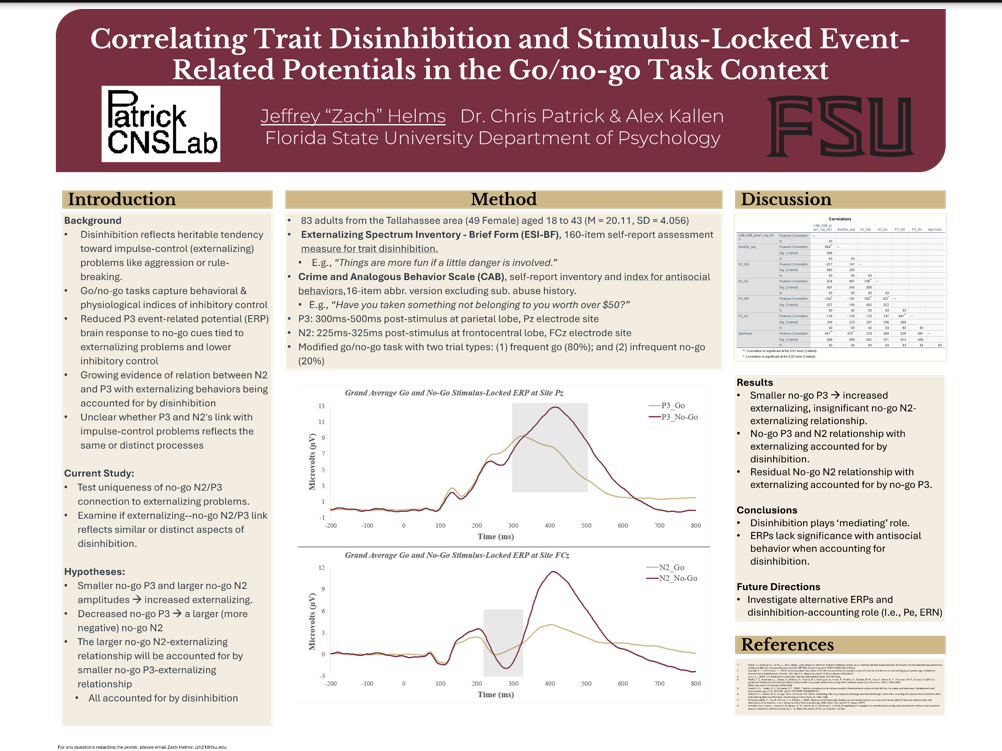Research Symposium
25th annual Undergraduate Research Symposium, April 1, 2025
Jeffrey Helms Poster Session 1: 9:30 am - 10:30 am/ Poster #140
BIO
Jeffrey "Zach" Helms is a senior from Gulf Breeze, Florida. He plans on continuing clinical psychology research after graduation and is interested in forensic applications.
Correlating Externalizing Behavior and Stimulus-Locked Event-Related Potentials in the Go/no-go Task Context
Authors: Jeffrey Helms, Dr. Christopher PatrickStudent Major: Psychology, Criminology
Mentor: Dr. Christopher Patrick
Mentor's Department: Department of Psychology Mentor's College: College of Arts and Sciences Co-Presenters:
Abstract
Disinhibition, a commonly examined trait, is largely characterized as one’s propensity for engaging in externalizing behaviors due to impulse-control problems. This study extends research on the neural correlates of externalizing proneness and focuses on N2 and P3 event-related potential (ERP) amplitudes within a go/no-go task context. Using the go/no-go task, an attempt was made to identify the relationship between the N2 and P3 ERPs with externalizing, and the mediating role (if any) disinhibition plays between them. Data was drawn from a sample of (n= 83) adults, with oversampling for psychopathic traits. The go/no-go task measured cued responses to target “go” stimuli in the presence of denied dominant prepotent response (“no-go”). Disinhibition was assessed via the Externalizing Spectrum Inventory Brief Form (ESI-BF), and externalizing via the Crime and Analogous Behavior Scale (CAB). EEG data, collected using a 128-electrode system, were preprocessed for artifact correction and baseline normalization, with N2 and P3 amplitudes extracted from task-relevant conditions. Linear regressions were used to analyze the relationships between ERP components, externalizing, and disinhibition scores. Results indicate 1) a smaller no-go P3 relates to increased externalizing, with an insignificant no-go N2-externalizing relationship; 2) the no-go P3 and N2 associations with externalizing were accounted for by disinhibition and 3) the residual no-go N2 relationship with externalizing after disinhibition was accounted for by no-go P3. Findings suggest that ERPs lack significance with externalizing behavior when accounting for disinhibition and opens the door to assessing other ERPs for a similar disinhibition-accounting role.
Keywords: EEG, Disinhibition, Externalizing, P3, N2


